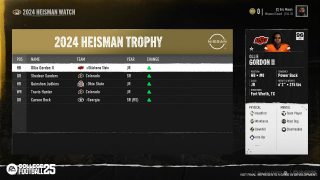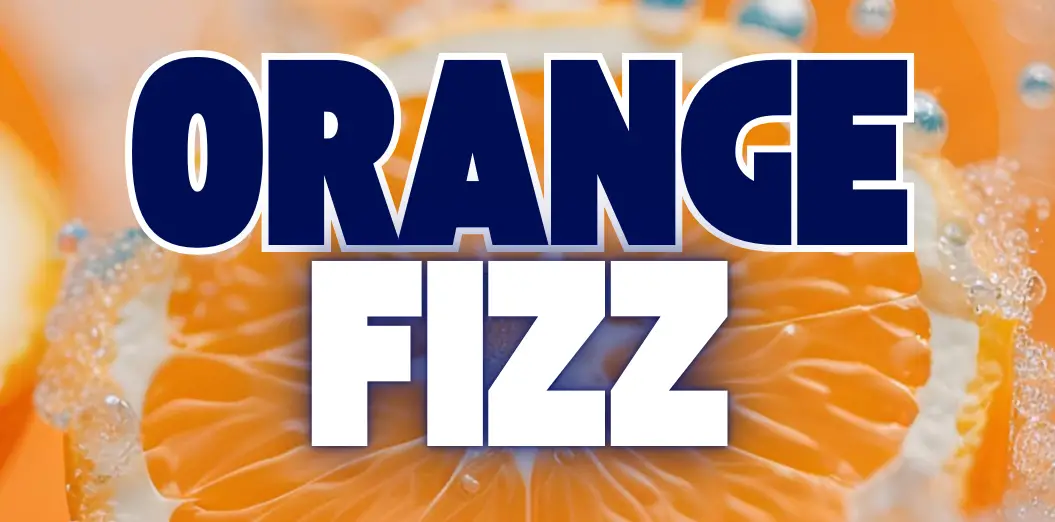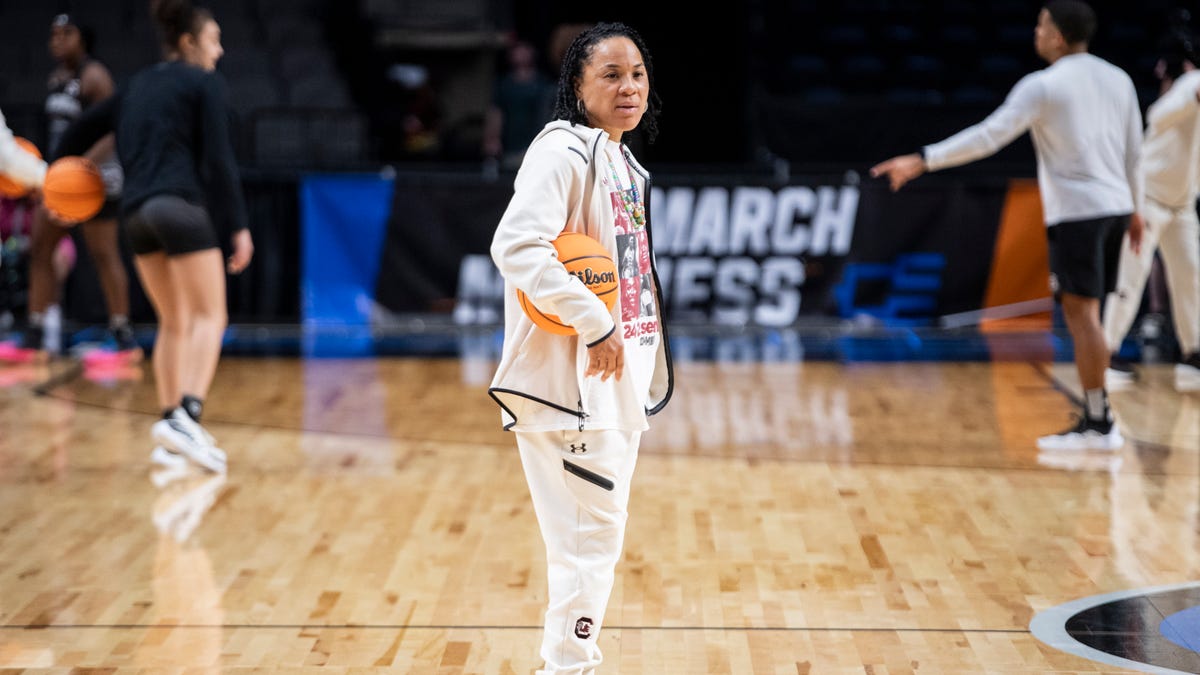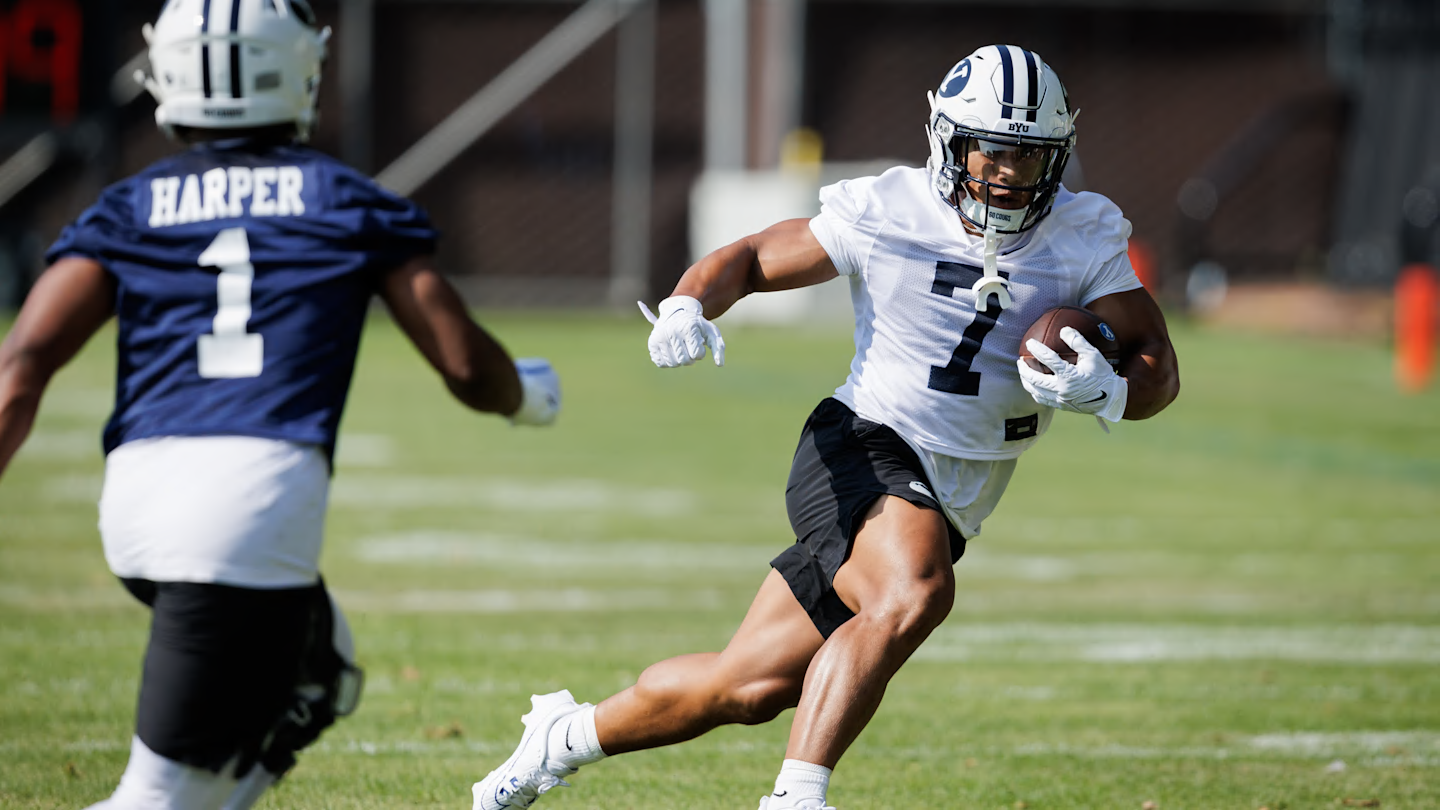Michael Brauner is a Senior Sports Analyst and Contributing Writer for Yellowhammer News. You can follow him on Twitter @MBraunerWNSP and hear him every weekday morning from 6 to 9 a.m. on “The Opening Kickoff” on WNSP-FM 105.5, available free online.
NIL
From High School Phenom to Campus Legend — How NIL Deals Are Reshaping College …


The rules for college sports have changed a lot. Athletes used to have to wait until they turned pro to make money off of their fame. Now, they’re making money before they even get to campus.
High school athletes, especially top basketball and football recruits, are becoming very valuable marketing tools thanks to NIL (Name, Image, and Likeness) rights. As the world of college sports changes, these young stars are trying to figure out a complicated new system where fame, money, and athletic promise all come together. NIL deals give young athletes a way to start their own businesses, build their brands, and become financially independent, just like https://casinosanalyzer.com/low-deposits/10-dollar-deposit-casino make it easier to get into online gaming.
NIL 101: A Marketplace That Moves Quickly
The NCAA put in place temporary NIL rules in June 2021 that let student-athletes make money from their own brand without losing their eligibility. Since then, the doors have opened wide. Players are getting paid to endorse products, appear in commercials, run social media campaigns, and even start their own lines of products.
The NIL space has grown quickly, and new players have come into the game:
- NIL collectives are groups of schools that pool donor money to get the best players.
- Marketing agents: experts at building athlete brands.
- Digital platforms help brands and athletes work together on short-term marketing deals.
It’s now common for high school stars, especially those from big states like Texas, Florida, and California, to think about NIL offers when they are making their college decisions.
Things have changed in the recruiting game.
Relationships and fit have always been important in college recruiting, but NIL has added a new, disruptive factor: financial leverage.
Soccer
It’s not uncommon for 5-star quarterbacks and skill position players to sign NIL deals worth six or seven figures. Top programs now try to get players to come to them not only by offering training facilities or a history of winning championships, but also by having clear NIL plans. Schools like Alabama, Texas, USC, and Ohio State have become big players in NIL because they have a lot of alumni and institutional resources.
Basketball players, especially those with a lot of followers on social media or highlight reels that go viral, are in a great position to benefit. A single high school dunk video can get millions of views, which is great for sponsors. Programs with a lot of guards and coaching staffs that know how to use the media are now attracting talent in part through NIL ecosystems that focus on media exposure.
From flashy deals to long-lasting branding
Smart athletes aren’t just thinking about how much money they’ll make; they’re also thinking about how long their brand will last. NIL is speeding up the process of making teenage athletes professionals. Players are learning how to:
- Make your own websites and lines of merchandise
- Make money from your TikTok, Instagram, and YouTube videos
- Work with brands from your area and across the country
- Get legal help when you negotiate contracts.
To improve their public image, some athletes are starting foundations or working with nonprofits. It’s like going into a business incubator that teaches college students how to handle money, public relations, and brand equity.
Effects on the culture of the team and the locker rooms
NIL is good for individuals, but it also makes people wonder about how teams work. Will players get angry if one makes $500,000 and the other makes nothing? Can coaches keep their egos in check?
So far, the results are different. Some teams say that morale has gone up because the athletes feel more secure in their finances and more in control. Some people are worried about broken locker rooms and the loss of a team-first culture. Programs that have strong leaders and teach NIL tend to do a better job of balancing these factors.
Schools like Clemson and Michigan have added NIL education modules that teach students about taxes, contracts, and how to be financially responsible. Coaches are taking on more and more of the CEO role, not only helping athletes get better, but also helping them build their professional brands.
Making things fair—or making the gap bigger?
Some people say that NIL could make the gap between top-tier and mid-major programs even bigger. Wealthy schools can put more money into NIL infrastructure, which makes it harder for smaller programs to get top talent.
Others think that NIL makes things fairer by letting lesser-known schools’ underdog athletes build niche followings. A great wide receiver at a small college could become a regional star by working with local businesses. In the same way, a point guard with a charming online personality can make money from a loyal digital fanbase without ever playing on national TV.
High School Athletes as Brand Builders
One of the most noticeable changes is how early this process starts now. Even 15- or 16-year-old athletes are creating professional images:
- Carefully choosing what to post on social media
- Working together with media outlets in high school
- Putting up highlight reels that look like movies
- Going to NIL education camps and meetings
Parents, high school coaches, and even personal managers are now involved in making decisions. This early start helps players learn about the business side of sports, but it also puts a lot of pressure and attention on them.
The Gray Areas of Law and Morality
Some states let high school athletes sign NIL deals, but others don’t. This makes for a patchwork system that can be confusing, lead to legal problems, and be unfair.
There are still worries about exploitation, though. Are teens ready to sign contracts with big brands that last for years? Who keeps them safe from bad deals? Regulatory frameworks are still catching up, and as lawsuits happen, the situation will probably change again in the next few years.
Looking Ahead: NIL’s Effects in the Future
NIL isn’t going anywhere, and it will have a bigger impact on college sports in the future. We can expect the following in the near future:
- More technology will be used in NIL deal marketplaces.
- Better data analysis to figure out how much an athlete is worth as a marketer
- AI-generated brand profiles to help athletes find sponsors
- Digital branding opportunities with NFTs and metaverse tie-ins
People who see NIL not as a way to make money but as a way to invest in their own and others’ growth will be the real winners.
Last Thoughts
High school stars are no longer just prospects; they’re becoming businesses, with highlight reels and sponsorship deals. NIL has changed how schools recruit players, raised the bar, and turned college campuses into marketing centers. As players go from phenoms to legends, they are no longer just trying to win trophies; they are also trying to build a legacy, make money, and make a difference.
NIL deals give young athletes a chance to try out being an entrepreneur, just like $10 deposit casinos give casual gamers a simple way to get started. These deals open doors that were closed just a few years ago.
There is now a new playbook for the journey from prep star to campus icon. And for athletes who have the right skills, timing, and vision, the game has never looked better.

NIL
Tuberville on NIL legislation: ‘We’re getting a little closer, but it’s almost impossible’
Over the last half decade, Name, Image, and Likeness (NIL), the transfer portal, and the intertwining of the two have been some of the biggest topics discussed in college football outside of the actual games, and sometimes even more so. It’s a new era in college sports, and the current Presidential administration has taken steps […]

Over the last half decade, Name, Image, and Likeness (NIL), the transfer portal, and the intertwining of the two have been some of the biggest topics discussed in college football outside of the actual games, and sometimes even more so.
It’s a new era in college sports, and the current Presidential administration has taken steps to try to address the chaos. President Donald Trump recently signed an Executive Order establishing national standards surrounding NIL. Additionally, a bipartisan bill known as the Student Compensation and Opportunity through Rights and Endorsements (SCORE) Act was introduced in the House of Representatives last month.
RELATED: As new Alabama-driven NIL bill gains traction, Congress moves to rein in ‘Wild West’ of college sports
Now more so than ever, the federal government is trying to get a handle on things, and former Auburn Tigers head coach and current U.S. Sen. Tommy Tuberville (R-AL) has spoken often on the subject.
Tuberville joined Lance Griffin on Sports Talk The Ball on FM 100.1 in Dothan to discuss a myriad of topics, including NIL. When asked for an update on the legislation, the senator revealed that while he is optimistic, it’s also an extremely complicated issue to tackle.
“We’re getting a little closer, but it’s almost impossible,” Tuberville said. “The President did a lot that he can do with his Executive Order, trying to put things into place…I visited with him quite a bit about it, and if there’s one thing I wish could be addressed, it’s the transfer portal.”
The lawmaker argued that the sport should go back to the former rule where players are allowed to transfer, but they must sit out a full season once they make the move.
“That would quit probably about 70 or 80 percent of the transfers because people aren’t gonna pay a kid to sit on the bench for a year…we have got to come to some sense of reality that education [comes] first, look out for the well-being of the player in terms of getting that degree, but also being fair. I’m for them making money, but this is getting ridiculous the way they’re transferring every year…the NCAA has no backbone…they have no sense of requirement or responsibility for these kids. They have to be accountable, players as well as coaches, and the schools.”
RELATED: Tuberville calls out Texas Longhorns while speaking about issues with NIL
Tuberville said he is continuing to work directly with Trump to analyze how the old rules of the transfer portal can be enforced. Whether or not any change becomes a reality remains to be seen, but the Senator is certainly correct in saying it would cut down on the total amount of transfers, something which most fans would be for.
NIL
Dawn Staley discusses revenue sharing, NIL on Michelle Obama podcast
South Carolina women’s basketball coach Dawn Staley discussed revenue sharing in depth for the first time, including the challenges of keeping control as college athletics changes, on a podcast with former First Lady Michelle Obama that aired Aug. 13. The House settlement allowed schools to begin paying athletes up to $20.5 million annually beginning July […]

South Carolina women’s basketball coach Dawn Staley discussed revenue sharing in depth for the first time, including the challenges of keeping control as college athletics changes, on a podcast with former First Lady Michelle Obama that aired Aug. 13.
The House settlement allowed schools to begin paying athletes up to $20.5 million annually beginning July 1. It’s in addition to NIL pay.
Staley revealed her players must sign Non-Disclosure Agreements regarding the money they receive. Obama said the players don’t need to be in the business of knowing what each other makes.
“Now whether they can stick with that or not, some of them get disgruntled and maybe transfer and just say what ‘I was making (amount)’ and it can stir up the pot but I’m very honest,” Staley said in the episode recorded June 10. “I’ll tell them, there’s a reason why you get paid this and you get paid that. I’ll explain that to them.”
Dawn Staley on NIL, revenue sharing in college sports
Obama asked how these changes have impacted the locker room and Staley said knock on wood, they haven’t. She said she’s clear in the financial conversations, and tries to do most of the talking with agents. Some players have the same agent, which increases the likelihood of knowing what a teammate makes.
South Carolina hasn’t publicly addressed how the money will be distributed but Staley said in general, “Probably $20 million per school but that’s football, that’s men’s basketball and maybe sprinkling women’s basketball and other Olympic sports.”
Three three-time national championship coach who is now in her 17th season with the Gamecocks was asked by Obama how revenue sharing has changed recruiting.
“That’s the difficult part,” Staley said. “The market says that if you’re a non-contributor and you go into the portal, they can go ask a school like us for $100,000. If I entertain that, they’re going to take it to another school, (say) ‘hey South Carolina offered me a hundred grand, you got $150,000?”
She said South Carolina has a certain amount of money to work with and she stays within budget and doesn’t overpromise but does “innovative things” to “help her players out in that space.”
An example is in November, the Gamecocks will play in the inaugural Players Era Women’s Championship, which gives players the chance at least $1 million of NIL activities. They will play Duke on Nov. 26 then Texas or UCLA on Nov. 27 in Las Vegas.
“I’m supportive of it, I really am,” Staley said about the changes as a whole. “I think it’s long overdue,” but keeping control is necessary.
“We got to find a way to balance,” Staley said. “To keep it an amateur sport while allowing young people to go out there and benefit from their name, image and likeness.”
Lulu Kesin covers South Carolina athletics for The Greenville News and the USA TODAY Network. Email her at lkesin@gannett.com. Follow her on X @Lulukesin and Bluesky @bylulukesin.bsky.social
NIL
Caldeira Named Sun Belt Preseason Offensive Player of the Year as Mountaineers are Picked Second
Story Links MORGANTOWN, W.Va. (Aug. 13, 2025) – The West Virginia University men’s soccer team was tabbed to finish second in the 2025 Sun Belt Men’s Soccer Preseason Poll, as announced by the conference on Wednesday. Senior Marcus Caldeira was named the Preseason Offensive Player of the Year while graduate student […]

MORGANTOWN, W.Va. (Aug. 13, 2025) – The West Virginia University men’s soccer team was tabbed to finish second in the 2025 Sun Belt Men’s Soccer Preseason Poll, as announced by the conference on Wednesday.
Senior Marcus Caldeira was named the Preseason Offensive Player of the Year while graduate student Carlos Hernando and sophomore Isaac Scheer joined him on the Preseason All-Conference Team.

The Mountaineers tallied 92 points, including two first-place votes in the coaches poll. Marshall, the 2024 national runner-up, was picked to win the conference with 97 points and eight first-place votes. UCF was slotted in third behind WVU with 74 points while Kentucky (67) and South Carolina (65) were fourth and fifth, respectively.
James Madison was voted sixth (48), ahead of seventh-place Old Dominion (36) while Georgia Southern (30), Georgia State (24), and Coastal Carolina (17) rounded out the poll.
Caldeira is the Sun Belt Preseason Offensive Player of the Year for the second consecutive season. In 2024, he finished the season with 11 goals and 23 points en route to being named to the All-Sun Belt second team and United Soccer Coaches All-Southeast Region second team. In his career, he has 28 goals, ninth most in WVU history.
Hernando returns for his third season as an anchor for a strong WVU back line that allowed just 1.05 goals per game last season and recorded 10 shutouts. He totaled 1,548 minutes played, scoring two goals and tallying one assist. Both his goals came in the Sun Belt Championship as he was named to the All-Tournament Team.
Scheer is back for his second season after a strong freshman campaign. He played in all 22 games with 13 starts, logging 1,255 minutes. He scored three goals and had five assists, second most on the team.
Preseason Offensive Player of the Year:
Marcus Caldeira, West Virginia (Sr., Mississauga, Ontario, Canada)
Preseason Defensive Player of the Year:
Takahiro Fujita, Marshall (Jr., Nara, Japan)
Preseason Goalkeeper of the Year:
Sebastian Conlon, Kentucky (Sr., Reston, Va.)
Preseason All-Sun Belt Team
F – Ethan Ballek, South Carolina (Sr., Timnath, Colo.)
F – Marcus Caldeira, West Virginia (Sr., Mississauga, Ontario, Canada)
F – Ryan Holmes, Georgia Southern (Jr., Milton Keys, England)
M – Agustin Lopez, Kentucky (So., Santa Fe, Argentina)
M – Isaac Scheer, West Virginia (So., Charlotte, N.C.)
M – Alexander Stjernegaard, South Carolina (Sr., Rungsted Kyst, Denmark)
M – Alejandro Velazquez-Lopez, South Carolina (So., Knoxville, Tenn.)
D – Takahiro Fujita, Marshall (Jr., Nara, Japan)
D – Carlos Hernando, West Virginia (Grad., Madrid, Spain)
D – Josh Gordon, Kentucky (Jr., Scarborough, Ontario)
GK – Sebastian Conlon, Kentucky (Sr., Reston, Va.)
*Ties were not broken.
2025 Sun Belt Conference Men’s Soccer Preseason Coaches Poll
1. Marshall (8) – 97
2. West Virginia (2) – 92
3. UCF – 74
4. Kentucky – 67
5. South Carolina – 65
6. James Madison – 48
7. Old Dominion – 36
8. Georgia Southern – 30
9. Georgia State – 24
10. Coastal Carolina – 17
Parentheses indicate first-place votes
For more information on the Mountaineers, follow @WVUMensSoccer on Twitter, Facebook and Instagram.
NIL
BYU Football Still Waiting on NCAA Decision for Senior Running Back Hinckley Ropati
BYU is still waiting on an NCAA decision regarding the eligibility of senior running back Hinckley Ropati, BYU head coach Kalani Sitake announced on Tuesday. Ropati has been not been on the roster since the end of the 2024 season. In the spring transfer window, Ropati entered the transfer portal. He announced his plans to […]



BYU is still waiting on an NCAA decision regarding the eligibility of senior running back Hinckley Ropati, BYU head coach Kalani Sitake announced on Tuesday. Ropati has been not been on the roster since the end of the 2024 season. In the spring transfer window, Ropati entered the transfer portal. He announced his plans to return to BYU for the 2025 season on his podcast. However, Ropati has not been able to participate in Fall Camp while he waits on the decision from the NCAA.
Sitake said that Ropati would be on the practice field as soon as he is granted an extra year of eligibility, assuming the NCAA rules in his favor. Ropati is seeking a medical hardship waiver after suffering multiple season-ending injuries.
Ropati arrived at BYU for the 2020 season. He suffered a season-ending knee injury during Fall camp and did not play that season.
In 2021, Ropati had 4 carries for 15 yards. In 2022, he had 189 yards on 36 carries and he had 6 receptions for 97 yards.
Prior to the 2023 season, Ropati suffered another season-ending knee injury during Fall camp and did not play. The 2024 season was presumed to be his final season of college football. He was the backup running back behind LJ Martin and he ran for a career high 360 yards and 1 touchdown. He also had 5 receptions for 76 yards and a touchdown.
Getting Ropati back would be a major boost to the depth of the running back room. Just last year, BYU used five running backs in the month of September due to injury.
Back in Spring Camp, BYU was counting on redshirt freshman Pokaiaua Haunga. Haunga was used sparringly in 2024 and was going to take on a much greater role for the BYU offense in 2025. Then, Haunga was removed from the roster during Fall Camp for “personal reasons.”
BYU’s top two running backs are LJ Martin and Sione Moa. At this point in camp, that’s not in question. Both Martin and Moa could be very effective for the BYU offense and as long as they are healthy, the running back position will be in a good spot for BYU.
Behind Martin and Moa, the Cougars will turn to other players further down the depth chart like Enoch Nawahine, Jovesa Damuni and Preston Rex. Rex moved to running back over the Summer after starting his career at safety.
NIL
Hugh Freeze Embracing College Football’s NIL Landscape
Despite prepping for the upcoming season, Auburn Tigers head coach Hugh Freeze continues to work on recruiting for the future. Being a college coach requires the ability to multitask, juggling several responsibilities at one time in order to keep the program moving. Additionally, while Freeze hopes that many players will return next year, with the […]

Despite prepping for the upcoming season, Auburn Tigers head coach Hugh Freeze continues to work on recruiting for the future. Being a college coach requires the ability to multitask, juggling several responsibilities at one time in order to keep the program moving.
Additionally, while Freeze hopes that many players will return next year, with the transfer portal and NFL looming for some, standing pat and waiting idly as players depart is a losing strategy. Instead, the coaching staff endeavors to stack talent, not just filling out a roster but assembling a future depth chart that can withstand the rigors of the season, where attrition becomes a fact of life.
NIL Futures
With recruiting comes the talk of NIL deals, which can often act as deal-sealers. Unlike before, when it felt like the untamed West, safeguards and regulations found their way into the process, giving schools guidelines and barriers to how they spend money and how that money will be divided among the players.
Additionally, third-party NIL deals could generate serious cash for recruits. Freeze spoke to AL.com’s Peter Rauterkus about the NIL landscape.
“I’m pretty confident that the transfer kid has probably earned the right that you can say to him, ‘You’re going to get some outside NIL deals.’ And give samples of what’s happened in the past for a similar player at that position,” Freeze told Rauterkus.
That (more) honest approach, due to the changing landscape, is a far cry from the $100 handshakes and shady booster involvement of college football’s past.
Keeping Up with the Joneses
In Auburn’s backyard, Georgia and Alabama will always spend money. To the north, Tennessee will dole out cash for elite players. Life in the SEC dictates that if teams want to compete, they need to find a way to spend money on players.
Gone are the days of playing just for the love of the game. Love may make the world revolve, but it neither pays the rent nor puts gas in the car. Instead, the players hope to market their skills for cash.
Antique Sale
Freeze, from all indications, looks fully on board with leaving behind the old-school notions that players are being paid in a free education. While Auburn is one of the best schools in the SEC, and its students do receive a top-notch education, equating classes with helping the football team generate millions is uneven. Now, that doesn’t mean that the head coach appears like he wants to willy-nilly throw money at players.
Overview
Each football team is different than the last. No team stays the same from year to year. Expecting that is, on its face and above all else, ludicrous. Each fall, high school players take the field hoping to catch a program’s eye. It’s the nature of the game. Standing still in college football is never a sound move.
Auburn chose a proactive route instead of a reactive one.
NIL
Ohio State star Jeremiah Smith named “Most Marketable” NIL athlete
With the Fall sports season right around the corner, NIL campaigns are heating up as student-athletes across the country are capturing social media content, scheduling posts and planning announcements for their latest brand partners. But with the preseason team rankings now live for football, volleyball, soccer and field hockey, who are the most NIL-friendly individual […]

With the Fall sports season right around the corner, NIL campaigns are heating up as student-athletes across the country are capturing social media content, scheduling posts and planning announcements for their latest brand partners.
But with the preseason team rankings now live for football, volleyball, soccer and field hockey, who are the most NIL-friendly individual athletes in the country? Out2Win – the leading AI-powered athlete marketing intelligence platform – has released a list highlighting the 50 most marketable athletes in each Fall sport.
Leading the way overall is Ohio State sophomore sensation Jeremiah Smith who will be among the top players in the country – as the Buckeyes look to defend their National Championship – while also being a leading face in NIL. Combining his 76 catches, 1,315 yards and 15 touchdowns from a season ago with his major NIL deals including adidas, Red Bull and Nintendo make him a worthy No. 1-ranked athlete across all Fall sports.
MORE: San Diego State Partners With AI-Powered Athlete Platform for NIL Tracking
While Smith is both a star on and off the field, Out2Win’s ranking showcases how NIL is for all athletes, regardless of their performance prowess.
Smith tops fellow sophomore sensation wide receiver Ryan Williams of Alabama, Arch Manning of Texas, Bryce Underwood of Michigan and Jon Seaton of Ole Miss on the college football list. Harper Murray of Nebraska volleyball, Ava Nucci of Mississippi State soccer and Ryleigh Heck of North Carolina field hockey in their respective sports’ rankings.
The “Fall 50” is powered by the Out2Win Score – the platform’s proprietary ranking system – that evaluates athletes on a combination of factors including social media metrics, audience data, growth trends, sponsorship performance, among other data.
“The Out2Win Fall 50 celebrates a new era where an athlete’s impact extends far beyond on-field performance,” shared Out2Win Founder and CEO, Jack Adler. “In today’s NIL landscape, marketability is just as much about authenticity and connection as it is about athletic achievement – and these athletes are leading the way. Congratulations to the athletes named to the 2025 class of the Out2Win Fall 50.”
“It means a lot to be recognized for the work I put in both on and off the field,” added Ole Miss defensive tackle Seaton, a content creator with more than 1.8 million followers on TikTok and another 500,000 on Instagram. “The opportunity to build my own brand has allowed me to make a real impact in my community while also helping to grow the game I love.”
– Enjoy more NIL Daily on SI –
All-American Nebraska, Penn State volleyball stars add NIL sneaker deals
14-year-old soccer phenom makes NIL history with first partnership
NIL powerhouses Azzi Fudd, Livvy Dunne join star-studded sparkling water investment
Kai Trump joins Livvy Dunne, Travis Kelce with new NIL deal
-

 Technology2 weeks ago
Technology2 weeks agoAlly Runs New Game Plan in WNBA All-Star Rookie Debut
-

 Health2 weeks ago
Health2 weeks agoThe Women Driving A New Era In U.S. Ski & Snowboard
-

 High School Sports3 weeks ago
High School Sports3 weeks ago100 days to men's college basketball
-

 NIL2 weeks ago
NIL2 weeks agoESPN Announces 'dont wait run fast' by mgk as New College Football Anthem for 2025
-

 College Sports3 weeks ago
College Sports3 weeks agoCity rows to sporting destination goal on boats of new complexes & old strengths
-

 Sports2 weeks ago
Sports2 weeks agoNtekpere honored as Second Team Academic All-American | APG State News
-

 Rec Sports1 week ago
Rec Sports1 week agoSwimming & Diving Comments on the Rules – 2025-26
-

 Health3 weeks ago
Health3 weeks agoTrump administration investigates Oregon's transgender athlete policies
-

 Technology1 week ago
Technology1 week agoAmid Sports Chaos, ‘Known’ Data and Outcomes Help Agency Win
-

 Sports3 weeks ago
Sports3 weeks agoMore State Schools of the Year
































